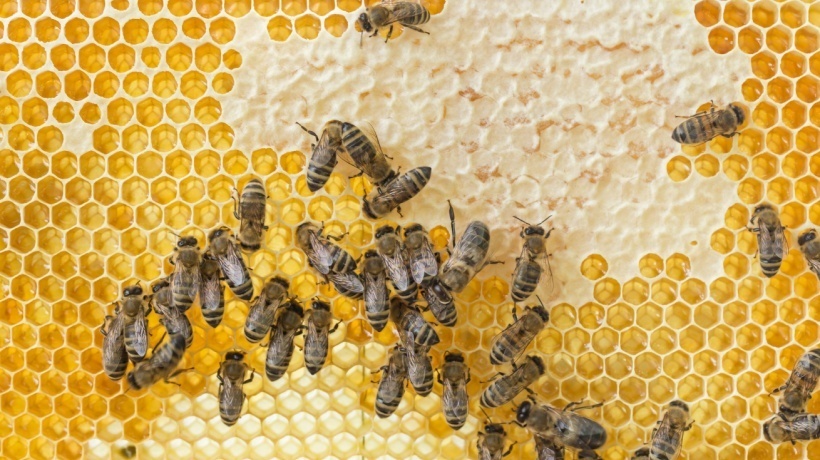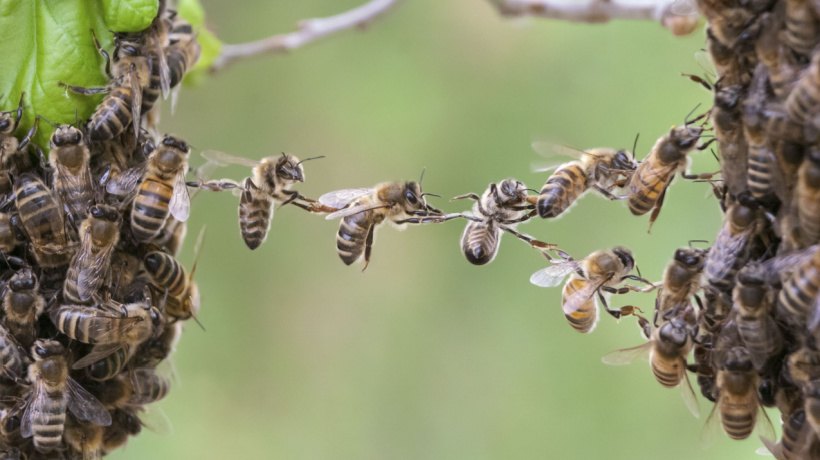L&D Lessons Learned From Bees
While there are plenty of things that our Apis allies can teach us (i.e., "busy as a bee" or "bee kind"), this article is to commemorate their true spirit of collaboration and community-building. It seems as though the humble bee has a solution for everything. When their hives become overpopulated, they send a scouting swarm on ahead to colonize a new one. When they feel threatened, they'll only use their stingers as a last resort. But there's also a thing or two they can teach eLearning professionals about cultivating a supportive culture that honors the individual and the whole. So, to celebrate World Bee Day, let's look at 5 collaborative learning rules inspired by these prolific pollinators.
5 Collaborative Learning Tips To Build A Buzz In Your L&D Strategy
1. Leaders Set The Example
The Queen Bee doesn't just populate the hive, she's also in charge of overseeing operations and making sure everything goes according to plan. Collaborative learning requires leadership for the same reason. Leaders may not populate the colony in the technical sense, but they do find the right team members, who also fit into the already existing community, for the task. Additionally, leaders must promote collaborative learning opportunities and encourage employees to exchange ideas and feedback.
2. Open Communication Is Key
Believe it or not, bees have been known to get their groove on. It's called the waggle dance and it involves enthusiastic figure-8 movements. Your learners would probably suffer from a bout of motion sickness if you employed the same tactics. However, the bees show us that communication is essential throughout the animal kingdom. In the case of collaborative learning, it's crucial to set communication guidelines and expectations. Ideally, your strategy should be founded on total L&D transparency. Employees should feel like they play a pivotal role in your culture instead of just sitting on the L&D sidelines.
3. Everyone Plays Their Part
While the Queen might be higher in the hive hierarchy, every bee has their purpose. Every member of the swarm knows their role and responsibilities. Truly effective collaborative learning initiatives should follow suit. While many organizations already understand the importance of role assignment for day-to-day tasks, employees must also understand how they fit into the L&D strategy. For example, should they step into the role of peer coach or mentor? How are they expected to participate in the online training program? Must they contribute content to your library to share their expertise?
4. Encourage Adaptability
Bees can quickly detect environmental changes and adapt based on their surroundings. In collaborative learning environments, your employees must be able to ride the tides of change and be flexible about training opportunities. Likewise, your L&D and HR teams should adapt their strategies based on emerging gaps and challenges. For instance, periodically reevaluate your objectives and goals, then adjust the collaborative learning program to meet the demand. First and foremost, you need to encourage adaptability among your online learners so that they avoid stagnation. The key to long-term growth is a combination of self-reflection, assessment, and ongoing feedback.
5. Knowledge Sharing Should Be Its Own Reward
If you really give it some thought, bees have a thankless job. They pollinate and provide us with the nectar of the gods (AKA honey) without any knowledge that it's benefiting mankind, or other species, for that matter. This example teaches us that knowledge sharing and helping peers to achieve their full potential should be enough to motivate online learners. Gamification badges and a virtual round of applause might give them a nudge, but imparting their expertise should be its own reward. In fact, this is the foundation for a successful collaborative learning program where employees openly share their thoughts, ideas, and opinions, even if there's no other incentive involved.
Conclusion
It's no coincidence that eLearning Industry's official mascot is a bee whom we've affectionally dubbed "Melissa." She always reminds us that collaboration, communication, and community are not just company values, but the cornerstones of Learning and Development. We must all be able to empathize with peers and take an altruistic approach to knowledge sharing instead of expecting something in return. Feel free to share your insights or experiences that cultivate a collaborative learning culture in your organization. Bee part of the community!






